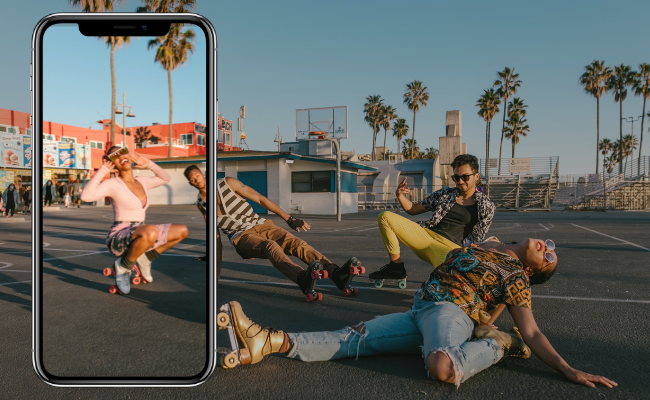This caught my attention because it finally frames influencer marketing the way the best creator-first brands already use it: not as a one-off shoutout machine, but as a repeatable performance engine where creators are both the media and the creative shop. If you’re still chasing follower counts and praying for virality, this “Survival Playbook” is the necessary reality check.
Influencer Marketing Survival Playbook: what actually matters in 2025
- Creators are a content supply chain. Secure usage rights up front and plan for paid amplification (Spark/Partnership Ads) from day one.
- Ditch vanity metrics. Optimize to creative iterations, conversion lift, and contribution to blended CAC, not just engagement rate.
- Affiliates and long-term deals are retention levers, not afterthoughts. Align incentives so creators keep posting because it pays.
- AI influencers are a lab, not a ladder. Useful for controlled tests, risky for trust. Treat as experimental, not foundational.
{{INFO_TABLE_START}}
Publisher|{publisher}
Release Date|{release_date}
Category|{category}
Platform|{platform}
{{INFO_TABLE_END}}
Influencer marketing’s “three R’s” – Reach, Relevance, Resonance – are table stakes now. In 2025, the unlock is creator licensing and paid distribution. The playbook gets that right: you’re wasting money if you hire a creator, post organically, and call it a day. The majority of ROI is unlocked when you turn high-performing creator posts into ads from the creator’s handle (TikTok Spark Ads, Instagram Partnership Ads, Facebook whitelisting) and keep iterating the creative like a performance marketer, not a PR team.
Where I’m nodding hard: clear deliverables, usage rights, and exclusivity terms. I’ve watched too many campaigns implode because brands assumed perpetual usage or global whitelisting “comes with the post.” It doesn’t. Nail the windows (30/60/90 days), the placements (organic vs paid, which platforms), and the geos. Pay more for broader rights; don’t smuggle it in. And keep exclusivity narrow and time-bound – “no competing electrolyte drinks for 30 days” beats “no beverages for three months,” which is how you alienate good talent fast.
The guide’s emphasis on repurposing content into ads is the right energy, but here’s the nuance most decks gloss over:

- Creative fatigue is real. Plan for 5-10 hooks per creator, not one. Test openers, first-frame copy, and formats (UGC demo, stitch/duet, green-screen, POV).
- Partnership tags impact delivery and comments. Sometimes a native-looking Spark from the creator’s handle outperforms a brand-handle ad with “Paid Partnership” all over it. Test both.
- Attribution is messy post-ATT. Don’t judge creators on last-click alone. Use tracking codes, platform lift studies where possible, and model their contribution to blended CAC and LTV.
On measurement, the playbook says “track KPIs” — fine, but sharpen the blade. For awareness plays, I care about thumbstop rate, 3s/6s view-through, and cost per engaged view. For conversion, I’m hawkish on cost per add-to-cart/checkout start, not just CPA, because creators often fill the top of the conversion funnel that closes later via search or email. If your ROAS looks weak, check your attribution window and your post-click journey before you blame the creator.
Affiliate is having a moment because it lines up incentives in a way flat fees don’t. The best operators are blending fee + rev share + performance bonuses. That keeps creators posting beyond the contracted slots because there’s upside. Just remember: affiliate works when three things click — competitive commissions, fast payouts, and assets that actually convert (deep links, unique codes, product seeding done right). Slap-dash programs with 3% commissions and clunky checkout flows won’t magically work because you called it “affiliate.”
The playbook’s push for long-term relationships is also where the culture is headed. Audiences can smell mercenary one-offs. Multi-month arcs let creators tell actual stories: unbox → routine → results → recommendation. Brands get compounding trust; creators get predictable income. Win-win. If you can, convert top performers into retainers with quarterly content quotas and guaranteed testing budgets.
Now the spicy bit: AI influencers. Yes, they’re cheaper, controllable, and 24/7 on-brand. Also yes, they can be uncanny, legally thorny, and brittle for trust. I’d treat them like a creative test cell — great for product renders, language localization, or concept validation. But if you’re in a category where authenticity is the currency (beauty, wellness, finance), don’t stake your brand trust on a synthetic persona. And remember, disclosure and IP/likeness rules still apply.

Two blind spots I wish more guides flagged: compliance and care. FTC disclosure is non-negotiable; build it into the brief. And creator care is retention — fast approvals, timely payments, clear feedback loops. Word travels. The brands that move quickly and pay fairly always get the first look at the best creators’ calendars.
What this means for you
- For brands: Budget for media from day one. Every creator brief should include a testing plan, usage rights, and 30-60 days of paid amplification. Set narrow, fair exclusivity. Measure contribution to blended CAC, not just last-click ROAS.
- For creators: Price your licensing separately, set clear whitelisting windows, and ask for performance bonuses on top of flat fees. Track your own benchmarks so you can sell what actually works (hooks, formats, product categories).
- For everyone: Build for speed. The accounts winning right now ship 10+ creative iterations a week and kill losers fast. Process is your growth hack.
Bottom line: the Survival Playbook gets the big idea right — influencers aren’t billboards; they’re your most flexible, highest-velocity creative pipeline. If you secure rights, pay for distribution, and obsess over iterative testing, you’ll survive. If you still shop for follower counts and hope the algorithm owes you a favor, you won’t.
TL;DR
Treat creators like a performance channel with licensing baked in. Test aggressively, measure beyond vanity stats, align incentives with affiliate/bonuses, and keep AI in the lab. Do this and influencer spend stops being a gamble and starts compounding.
Leave a Reply